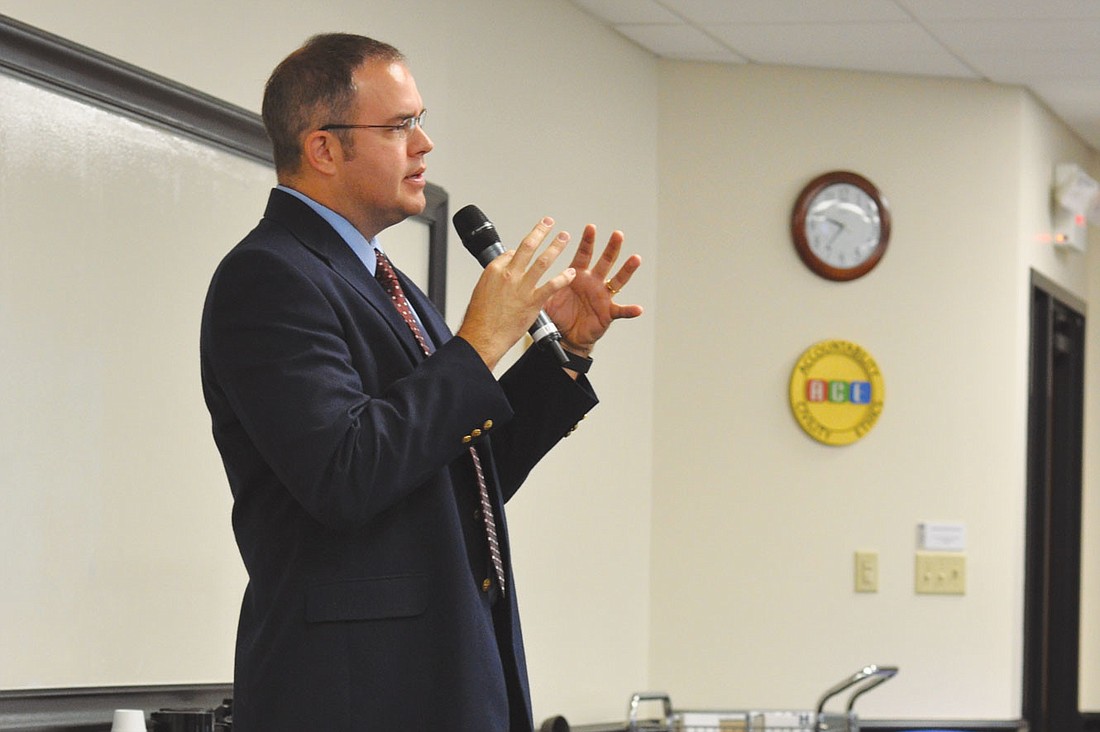- November 28, 2024
-
-
Loading

Loading

Manatee County planning officials are evaluating how development occurs in the community and how to best ensure growth pays for the infrastructure improvements — water, sewer and other services — that comes along with it.
Zoning and Planning Official John Osborne presented his findings from a two-year “How Will We Grow” study at a Manatee County Commission workshop Jan. 15.
County officials now are inviting the public to weigh in on options for future growth. Over the next few weeks, the East County Observer will take a close-up look at each of three scenarios that have been presented as alternatives for growth, as well as other related topics being considered.
The first alternative, dubbed “Staying the Course,” continues development patterns basically as they are.
MANATEE COUNTY — Density is a consistent topic when it comes to discussions of development. This discussion was no exception.
For the last decade, Manatee County officials have shied away from high-density projects in unincorporated areas, enacting a “low rise — low density” development philosophy, with new development approved at a maximum of three dwelling units per acre and a maximum building height of 35 feet. Residents also have objected to the development of neighboring communities, particularly if their proposed densities were higher than their own community’s.
The mantra has set the pace for development in the East County and Parrish communities, in particular.
Alternative 1 of the county’s three-part “How Will We Grow?” plan moves the county forward under this scenario, with a focus on development using current plans — low-density, single land-use projects that are primarily residential in nature.
Its population projection adds about 75,000 more dwelling units to unincorporated Manatee by 2035, and incorporates approved, yet un-built projects. It also focuses primarily on future growth in the southeastern part of the county, the area generally east of I-75 and south of the Manatee River, county documents show.
Advantages of Alternative 1 are that banks and builders alike are familiar with this low-growth plan for development. The real-estate market also has been demanding it for years, said Manatee County Planning and Zoning Official John Osborne.
Osborne said developers can request higher densities for projects, but the process is cumbersome and more expensive.
“You don’t get a lot of options (with limiting to three dwelling units per acre),” Osborne said. “You can do golf-course communities. You can get a Publix at every corner. But, you can’t get a lot of employment opportunities.”
Osborne said, although the “Staying the Course” option keeps development on its existing track, it does include some incremental changes. They include recognizing mixed-use development, transit-oriented development and allowing greater building heights in certain areas. It also would consider increasing the variety of uses in developing areas to decrease travel times.
Contact Pam Eubanks at [email protected].
Land Analysis
Manatee County remains predominantly rural, with agricultural lands accounting for about 56% of its land area.
Urban, or developed, land exists primarily in the western portion of the county. Uses such as commercial, governmental, industrial, institutional, recreation and residential account for about 30% of the county.
Manatee has about 22,467 acres of vacant land with an agricultural/rural future land-use designation that is outside the utility service area for central potable water and wastewater.
— Manatee County Evaluation and Appraisal Report, 2011
Click here to view "Future land-use designation of vacant land"